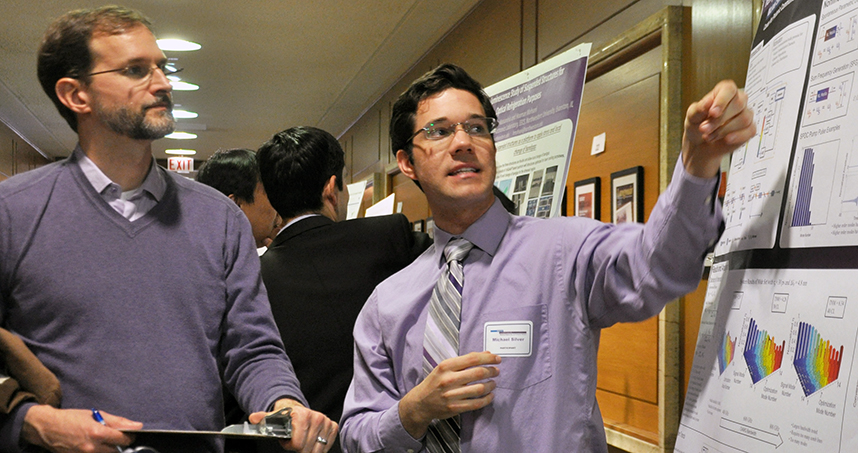EECS Poster Fair Displays the Future of Technology
Thirty teams of undergraduate and graduate students competed in the annual event

From new solutions for security and healthcare to cutting-edge ideas for entertainment, the future of technology was on display at the Department of Electrical Engineering and Computer Science Student Poster Fair.
Thirty teams of undergraduate and graduate students competed in the annual event in the lobby of Tech on March 6. Participants gave their best scientific pitches to win prizes. (Click here to find the full list of winners.)
Some of the fair’s projects included:
Faster, secure communications
Quantum communication is fast and secure, but it isn’t exactly efficient. A single particle of light, or photon, is transmitted across a distance and detected on the other side. The amount of information that one photon can carry is limited. Funded by DARPA, graduate student Michael Silver is working with Prem Kumar, the AT&T Professor of Information Technology, to improve quantum communication efficiency.
“By layering the light particles, we can shoot four particles together in one packet,” Silver said. “Then those particles can be separated on the other end.”
Not only does this technique increase efficiency, it also decreases the potential of the photons losing information along the way.
Sharing cell towers
PhD candidate Khalid Zeineddine is attempting to build the mobile data network of the future. Cellular telephone towers are everywhere, but your phone only communicates with one of them. Zeineddine’s plan is to connect multiple towers to one central processor, allowing users to take advantage of the entire network.
“Cooperation among towers in a network would be very powerful,” he said. “This could happen now. It doesn’t require a lot of changes in infrastructure.”
Advised by Professor Michael Honig, Zeineddine said the cooperative networks would improve cellular reception and provide for higher use capacities.